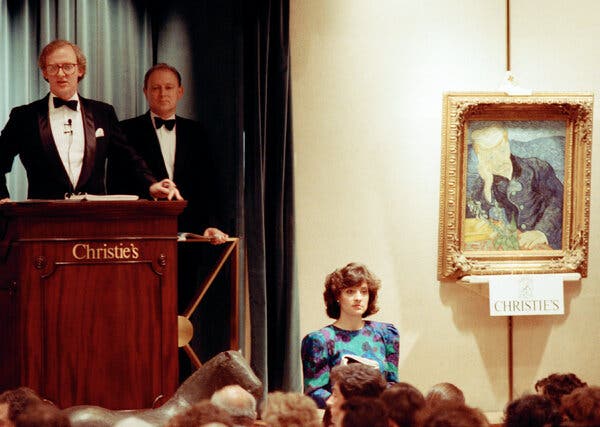Yuko Mohri thought she knew what the Japanese government wanted from its artists: something conservative and quiet. It certainly wasn’t a renegade punk rocker with a penchant for moldy fruits.
“It started out as a joke,” she said during a recent interview in her Tokyo studio. She was explaining how memories of a school science experiment that turned lemons into makeshift batteries had spurred the idea for a proposal to fill the Japanese Pavilion at the 2024 Venice Biennale with hanging lights plugged into pieces of fruit that would eventually rot. The exhibit was a critical success.
But the real story of her success happened behind the scenes, where government officials, gallerists and business leaders formed a financial network capable of supporting a Japanese artist like her on the international stage. It was part of a larger movement in Japan to reclaim the cultural clout that the country enjoyed in the 1980s, when it dominated the global art market.
Those were the days when Japanese corporations regularly bought European treasures, helping transform the art market from a rich person’s hobby into an investment vehicle. A strong currency and a government campaign to promote foreign spending to expand Japanese business abroad led to jaw-dropping auction sales for Impressionist paintings by Renoir, Monet and Cézanne. From 1987 to 1991, official trade figures showed that Japanese collectors spent more than $8.7 billion ($16.5 billion in today’s dollars) on art. The trend peaked with the 1990 sale of van Gogh’s “Portrait of Dr. Gachet” for $82.5 million, the highest price paid for an auctioned artwork at the time — roughly $200 million in today’s dollars.
Then the financial markets collapsed, leading to a period of economic stagnation in the 1990s known as the “Lost Decade,” until issues persisted for so long that some people renamed it the “Lost 30 Years.” Museums that had opened in the corporate skyscrapers dotting the Tokyo skyline had their acquisition budgets slashed, and bankrupt collectors sold their masterpieces offshore because of the crash.
This post was originally published on this site be sure to check out more of their content







